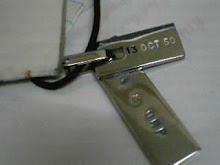In the every growing world of cosmetic dentistry whitening teeth treatments have become extremely popular. Equally demanded around the world whitening (aka bleaching) methods come in a variety of forms and budget ranges.
Popular forms include professional in-office bleaching sessions at your cosmetic dentist or at home whitening kits that can be purchased over the counter. In addition, there are even one hour options with brands like zoom and bright smile.
Even with whitening growing only a small percentage of people have tried it.
In general, whitening your teeth works! But there are a variety of factors you have to consider in order to select the best method for your use. Once you make a decision on a bleaching method you will see the true power of brightening your smile.
Bleaching versus Whitening
In the world of cosmetic dentistry, it is generally acceptable to use the term bleaching when a method is used to brighten the color from the natural pigment of the tooth. Most bleaching solutions utilize a gel known as carbamide peroxide.
In contrast, if you whiten your teeth via toothpaste or other agents that simply remove and clean the surface of the tooth then it is consider whitening. This could be via baking soda, toothpaste or other popular methods, but generally whitneing a bleaching are different in the world of cosmetic dentistry.
While the above differences exist, most people use the terms whitening and bleaching interchangeably. This is especially true with respect to advertising and over the counter products. Just be advised that there are differences and you should consider this as you research the options.
Whitening Teeth And Enamel
All teeth are composed of an outer coding which is called enamel. The tooth enamel is the protection, but as you age your enamel becomes worn and broken down. This breakdown can cause yellow discoloration sometimes known as dentin. Dentin gets in the cracks of your enamel and this is the yellowness you see on your teeth as you age.
Thanks to advancements with teeth bleaching, you can remove the yellowness that develops in the cracks of the enamel. Even with over the counter products the best teeth whitening options can greatly improve your smile.
Intrinsic Versus Extrinsic Tooth Discoloration
In the field of dentistry, stains are broken into two categories: Extrinsic and Intrinsic stains. If you are whitening your teeth then you would prefer to have moderate extrinsic stains which are essentially stains caused by you. These are common stains from coffee, wine, dark foods and wear on tooth enamel.
On the other hand, intrinsic stains are a part of the interior of the teeth. These stains are normally caused by outside agents like trauma to the tooth, drugs like tetracycline or too much fluoride when the permanent teeth were forming. With advancements in teeth whitening, many times intrinsic stains can be removed but it takes much greater persistence and work with your cosmetic dentist.
Tooth Staining, Can It Be Prevented
Generally as you age tooth staining becomes more prevalent. This is a result of wear on the teeth's enamel and micro cracking in the tooth enamel. Tooth staining can not be fully prevented, but there are definitely some items that affect the color or your teeth.
Understanding these factors can help you prevent staining.
Dark Liquids and Food: Liquids like soda, red wine, coffee, and tea are direct contributors to staining your teeth. In addition, colored foods like carrots, oranges and blueberries can have a direct impact on your teeth's color.
Pharmaceutical Drugs: You might think that all pharmaceutical drugs are 100% safe for your teeth. However, drugs like tetracycline have shown to be very damaging to your teeth when they are forming. Also, many youngsters can get damage to their teeth from too much fluoride during the development of permanent teeth.
Smoking: The nicotine in cigarettes is very harmful to teeth and will leave dark deposits that over time become intrinsic discoloring in the teeth.
Tooth Distress: Tooth distress as a result of physical harm can cause cracking in the enamel that collect harmful discoloring agents from your food especially dark color foods.
Myths About Whitening Teeth
The stronger the whitening gel the better: While the concentration of carbamide peroxide in the whitening gel is important it is not always best to have the strongest gel. It does take longer to whiten teeth with gel that has a lower percentage of carbamide peroxide, but these gels may not make your teeth as sensitive.
I can drink dark liquids while bleaching: It is not recommended to drink coffee, soda, red wine and other dark liquids while whitening. In fact, you should wait for a good period of time after whitening before you bring dark liquids back into your diet. Also to help prevent tooth staining, it is always better to use a straw when drinking dark liquids.
My dental insurance covers teeth whitening: Unfortunately most dental insurances do not cover the cost of whitening teeth. Therefore, you will be out of pocket between $100 to $500 depending Style treatment you will use.


0 Responses to "Whiten teeth - Consumer Guide To The Best Tooth Whitening Tips"
Post a Comment